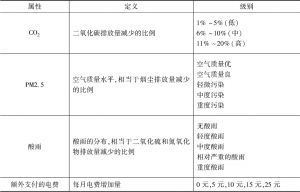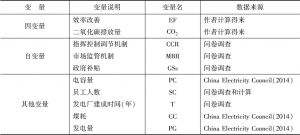章节
中国电力产业绿色化问题研究
关键词
作者
赵晓丽 ,博士,中国石油大学经济管理学院副院长,教授,主要研究方向为能源经济管理、能源系统结构转型。
检索正文关键字
章节目录
- 引言
- 对中国电力部门的外部环境成本的评估
-
中国的电力市场改革的环境足迹
- 中国电力市场改革的第一阶段:1949~1984年
- 中国电力市场发展的第二阶段:全面改革
- 电价改革及其对环境的影响
- 电力投资改革及其对环境的影响
- 垂直垄断改革及其对环境的影响
-
中国环境法规及其对电力产业二氧化碳排放量的影响
- 中国的环境监管政策
- 样本和数据
- 二氧化碳排放量
- 环境规制的类型
- 模型
- 研究结果
- 结论:中国电力产业的绿色化未来
- 附录
相关文献
查看更多>>>


















